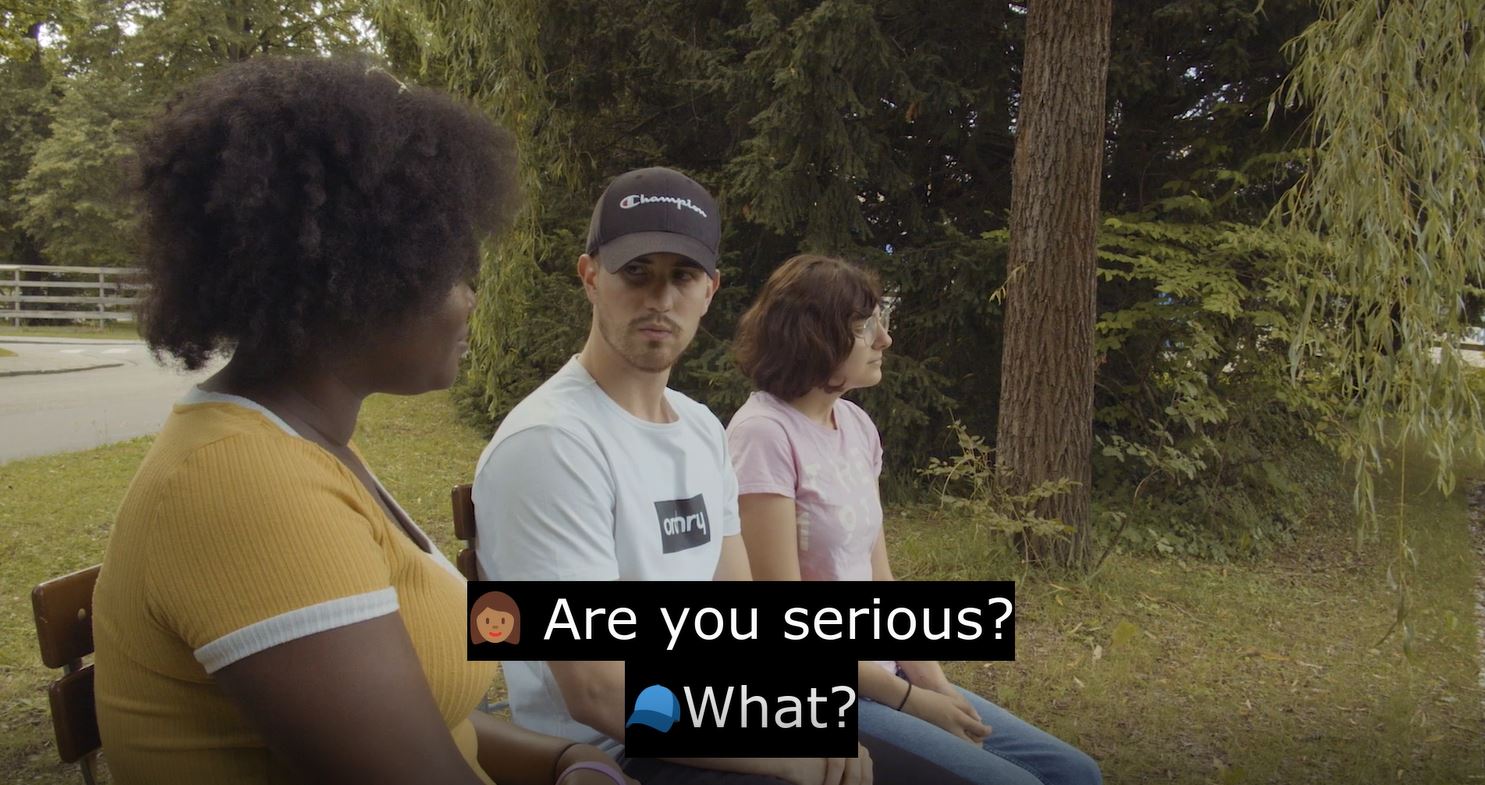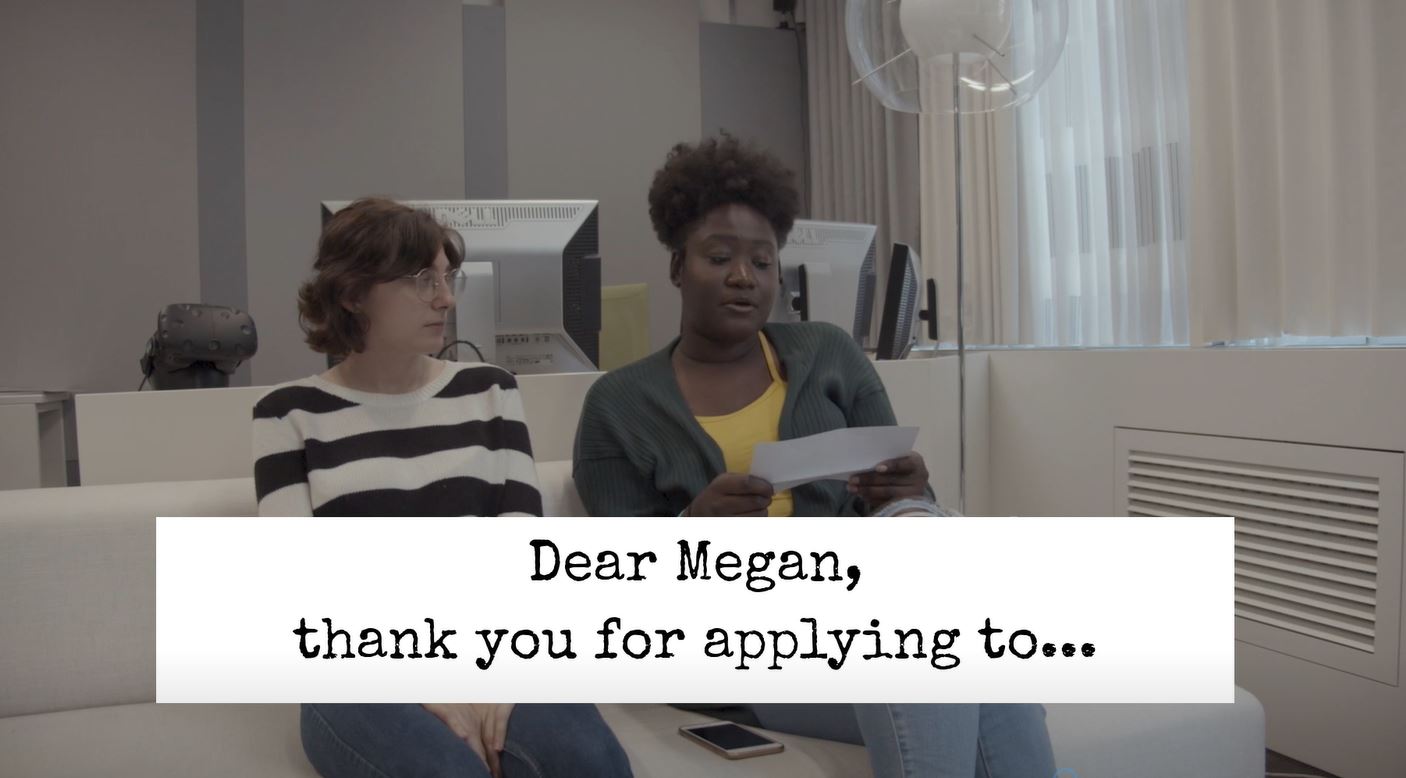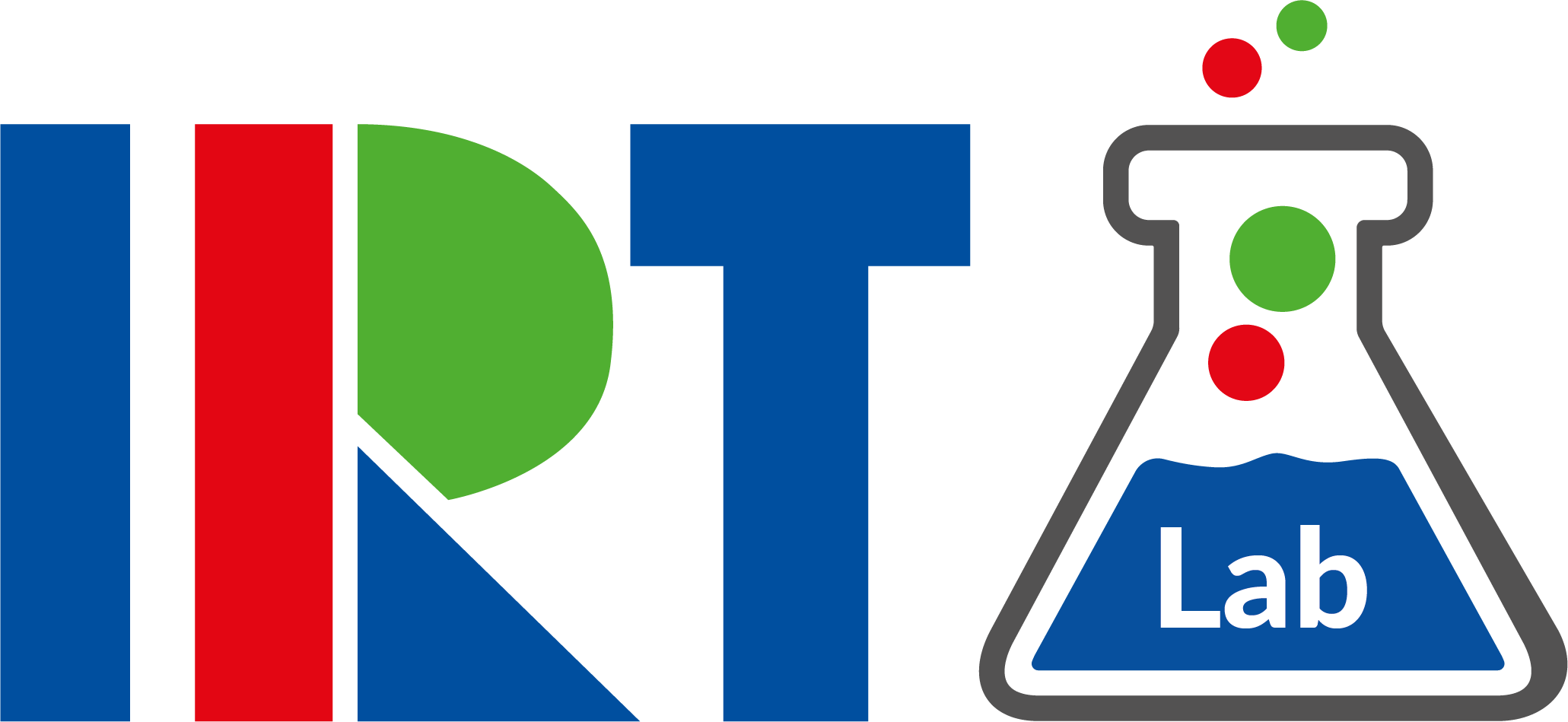More creative than current broadcast subtitles, but with measure and goal – that’s how subtitles should be. The IRT is researching its design and mechanics. So far, the display options of television subtitles have been very limited. This is due in particular to Teletext technology, which is still an essential part of the subtitle workflow. However, the emergence of new subtitle technologies will offer a greater scope in the future. Therefore, as a secondary aspect in the area of accessibility, the subject of creative subtitles is examined in the IRT. Creatively designed subtitles should be integrated as best as possible into the video or the video environment. The aim is to adapt the subtitles to the film aesthetics as well as the video content through creative design and transparency.
Target Group

Emojis as a Speaker-Identifier
The components for the hearing-impaired or deaf subtitling (music and sound descriptions) are included. In a Masterthesis written at IRT in 2019 it was examined, how emojis as a Speaker-Identifier could be working. For that, a similar-looking emoji matching the actor in the scene was placed in front of the subtitle. The basic idea for the design of creative subtitles is based on the fact that subtitles are usually not really “designed”. On the other hand, a target group is addressed in the social media channels that consume 82 percent of videos without sound. Subtitles are a big topic here, and creative subtitles are already being used. Since creativity can also be immeasurable, basic building blocks were considered that can be important for implementation.
Creative Styles

Typography for subtitles
In social media users experiment with elements of positioning (including tracking), typography, emojis, and effects. These elements open doors for numerous new possibilities. Position subtitle With the positioning the subtitle text can be placed near the speaker. To illustrate: A text can also be placed next to the speaker’s head. A protagonist is usually placed a little further to the left or right in the image – this aesthetic requirement creates space for the subtitles. The added value could be a shorter fixation point from A (head of the person) to B (subtitle). Typography for subtitles. Everyone comes into contact with typography. Choosing a font for certain text representations is very important and is firmly anchored in its use. Long texts, including novels, use a serif font (e.g. Georgia), while presentations use a sans serif font (e.g. Verdana). The Roboto font has established itself on Android smartphones. In advertising, the product is emphasized and emphasized by the typography. Brands use certain fonts to make their product more individual. Keyword: word markers. This now goes so far that large companies have their own fonts created. Typography is now firmly anchored in society, and this could also be reflected in the subtitling. For example, a person who has received a handwritten letter and reads it aloud can be represented in the subtitle by a typographically suitable font. Emojis create feelings Emojis have become an integral part of messenger texts and short messages.
Subtitle Creation
Subtitles with emojis can already be displayed using Unicode-based formats such as IMSC and EBU-TT. They can be created manually or with the use of a subtitle editor like “imscED”. “imscED” is an open source project by IRT and has been released in an early alpha version. “imscED” editor makes it easy to create Creative Subtitles with the IMSC format and has also a feature to burn in subtitles which makes it especially attractive to be used for social media subtitles.
Future Work
The IRT is working together with ARD-Text, SWR, and FUNK to create and test any content to see the possibilities and potential of creative subtitles. The next step is to refine and specify the results of the creation regarding the creative subtitles through users’ feedback.
Learn more about creative subtitles and watch the demo video:

